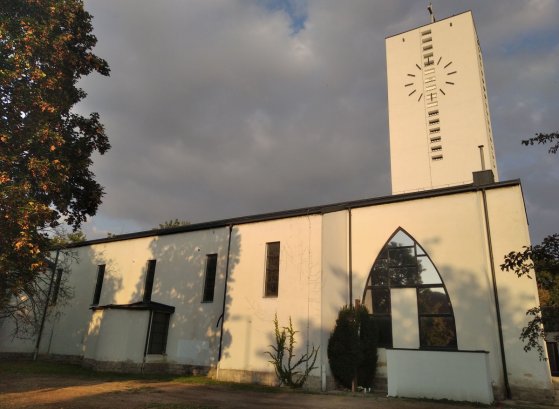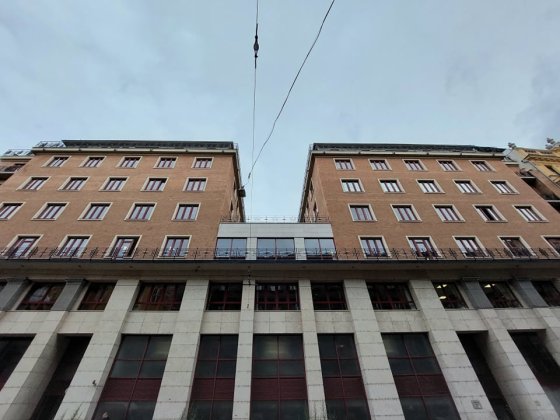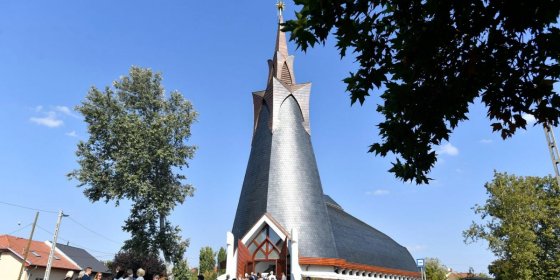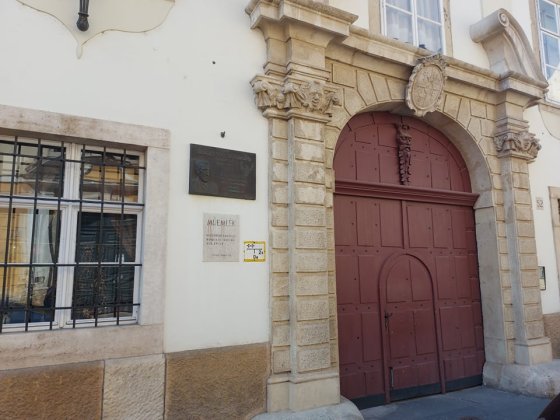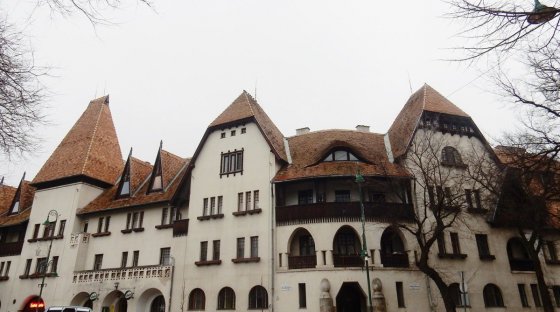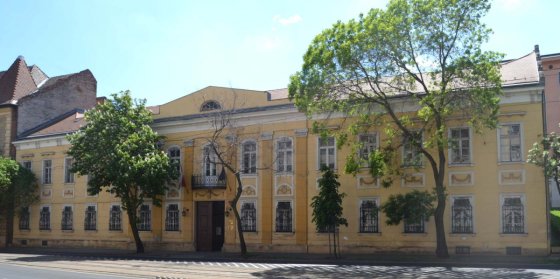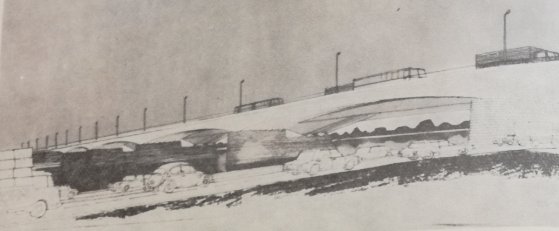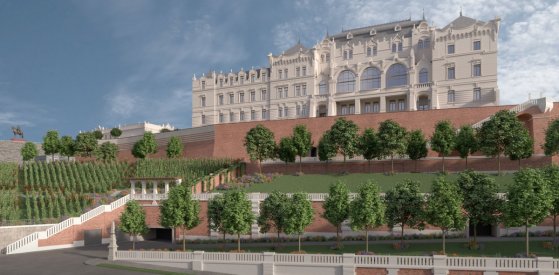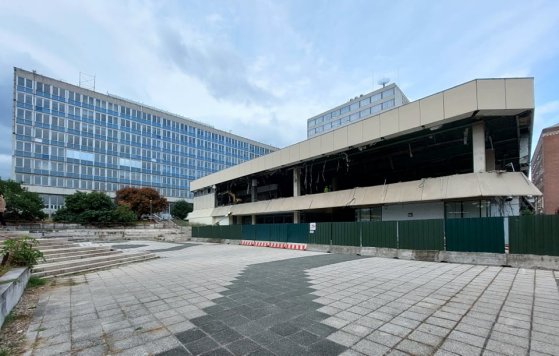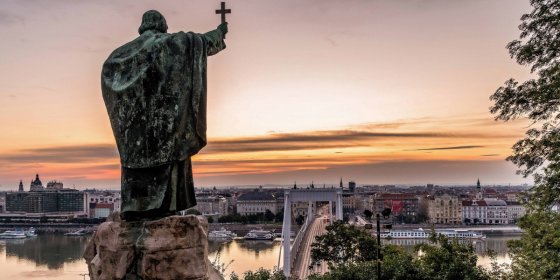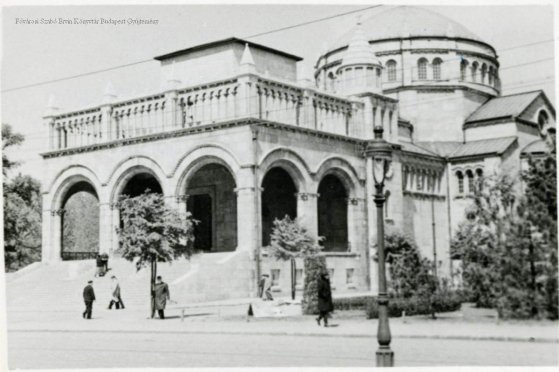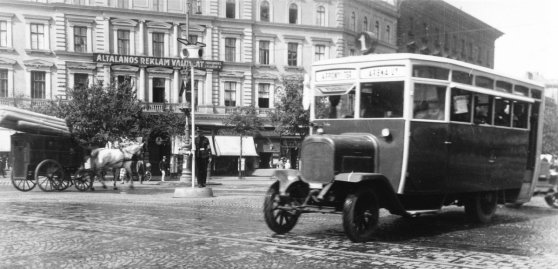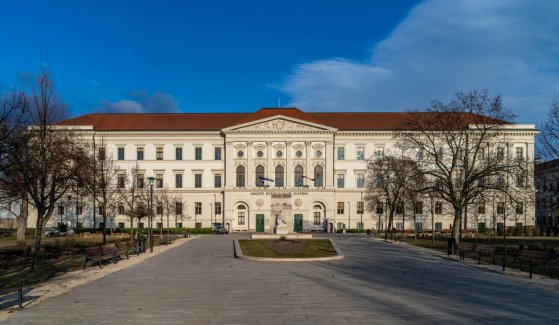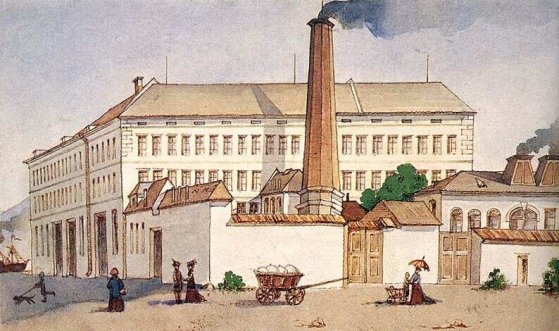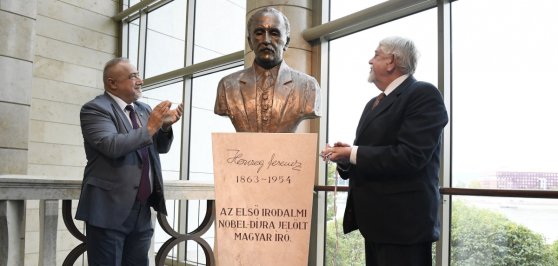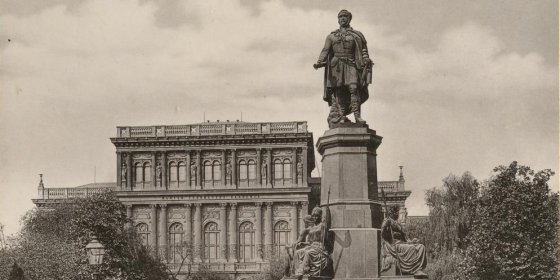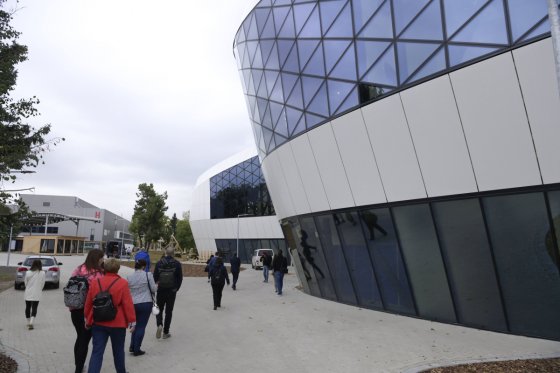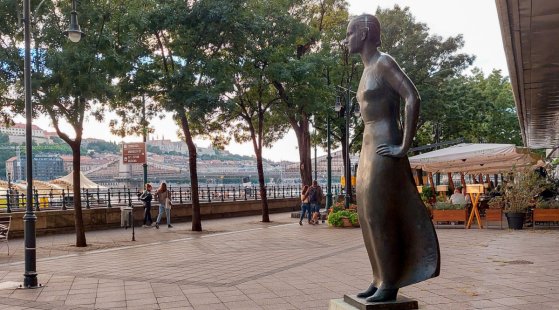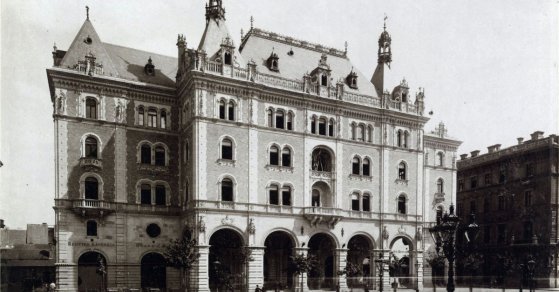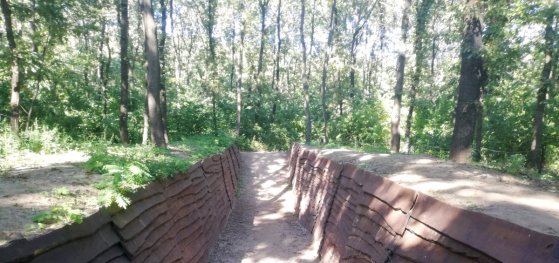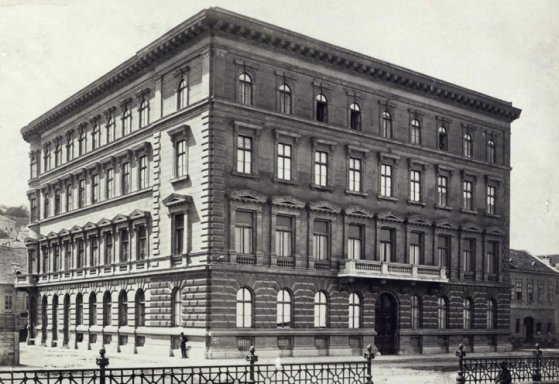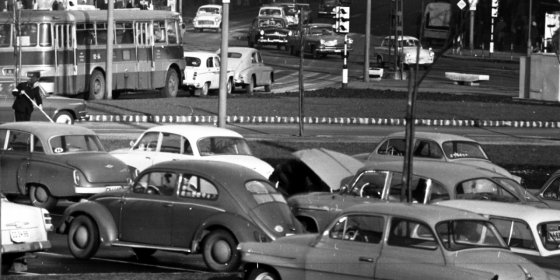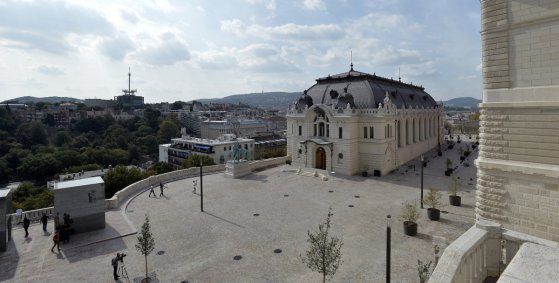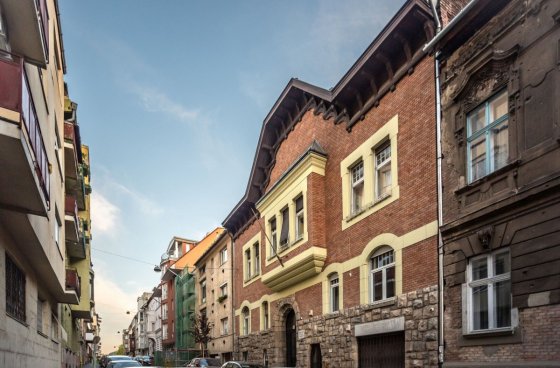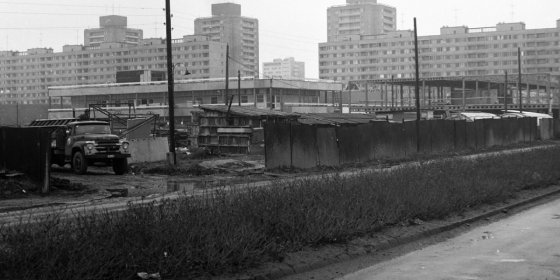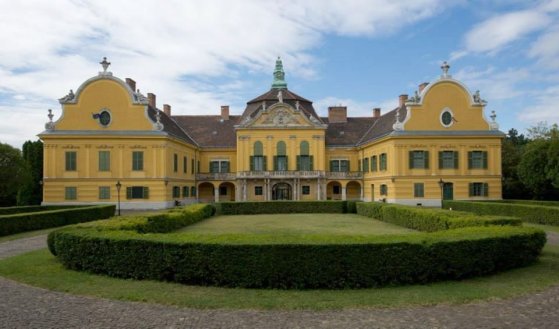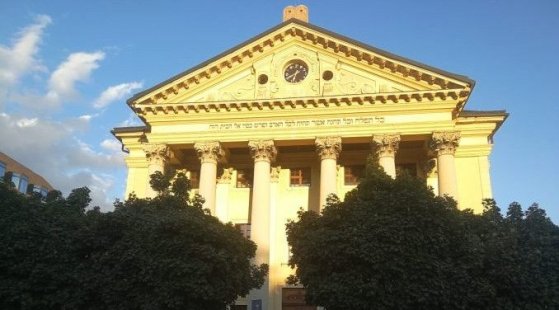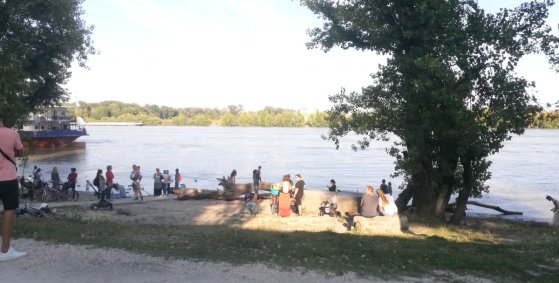 The Bridge Report, which brought a turning point in the history of Budapest
A travel report that changed the history of Pest and Buda, as well as Hungary. The little book contributed to the change of half a thousand years of legal customs and the implementation of an investment of unprecedented size and technical quality. This book was The Bridge Report [Hídjelentés in Hungarian].
The Bridge Report, which brought a turning point in the history of Budapest
A travel report that changed the history of Pest and Buda, as well as Hungary. The little book contributed to the change of half a thousand years of legal customs and the implementation of an investment of unprecedented size and technical quality. This book was The Bridge Report [Hídjelentés in Hungarian].
Budapest
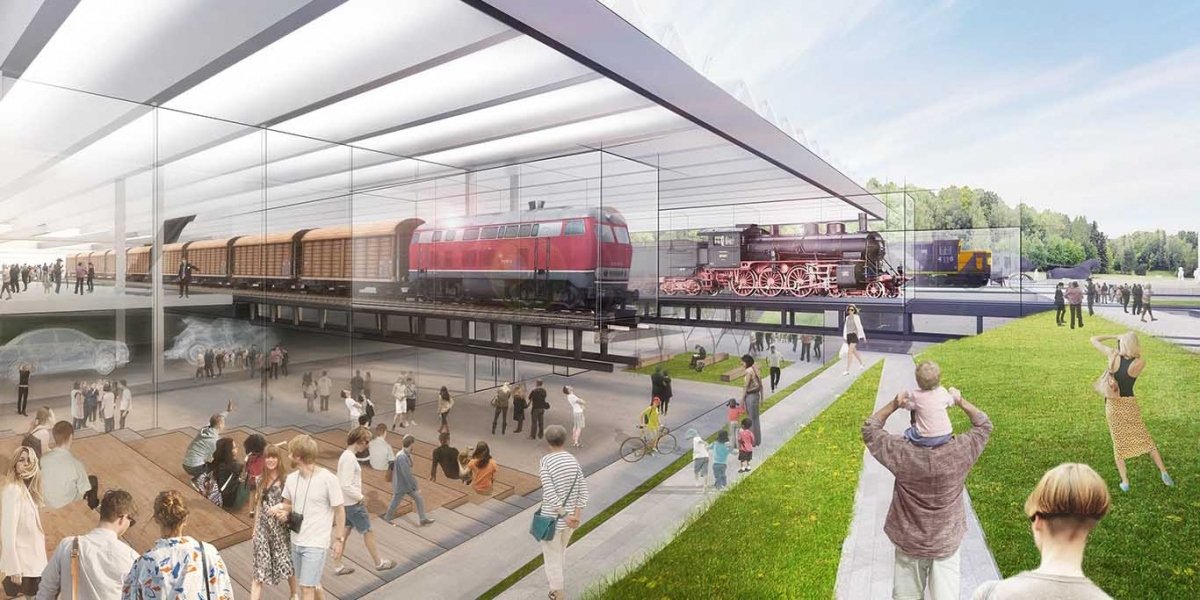 The investment in the new Transport Museum will be accelerated - Preparatory work may begin next year
The investment in the new Transport Museum will be accelerated - Preparatory work may begin next year
September 29, 2021 at 2:00 PM
From 2022, the Northern Vehicle Repair will officially become the home of the Hungarian Museum of Technology and Transport. They are bringing forward the necessary demolition, environmental remediation of contaminated soil and reconstruction of some smaller buildings. Reconstruction of the Diesel Hall into a museum could begin in 2023.
Modern, yet traditionally Hungarian - the Church of St. Michael in Albertfalva is 80 years old
September 29, 2021 at 10:00 AM
September 29 is the feast of St. Michael the Archangel, the most popular, most often depicted angel. He was elected patron of several churches in Budapest, the youngest of which was the parish church of Albertfalva, consecrated in 1941. The modern, yet traditionally Hungarian building has recently been expanded with a new community house.
Simon Tolnai, the Hungarian press magnate built a press empire from scratch in Dohány Street
September 28, 2021 at 9:30 AM
Pestbuda rarely reveals behind-the-scenes secrets of their editorial staff, now they make an exception: when researching the past of Budapest, journalists often look for information or photos in the Tolnai Világlapja newspaper. The first issue of the newspaper was published 120 years ago, on 28 September 1901. Its founder, Simon Tolnai, built his huge press empire from scratch, centred first in the demolished Orczy House on Károly Boulevard and then in Dohány Street. The latter still stands today, operating as an office building.
Makovecz started it, his pupil finished it: The church of Pesterzsébet was inaugurated
September 27, 2021 at 4:00 PM
The Reformed Church of Togetherness in Pesterzsébet-Szabótelep was consecrated, the foundation stone of which was laid on September 23, 2018, and construction began in 2019. A 20th district building is the first church in Budapest, which is based on the ideas of Imre Makovecz. the details of the plans were worked out by Tamás Dósa-Papp, the student of the world-famous architect. The church also has a congregation house and a parish.
Africa researcher, hunter and writer Zsigmond Széchenyi was evicted from the Buda Castle
September 27, 2021 at 9:00 AM
One might think that the life of a world traveller and Africa researcher is enviable. However, this is not necessarily the case with Zsigmond Széchenyi: one of the most significant Hungarian travellers and hunters of the 20th century was dragged and evicted from the Buda Castle by the communist regime. As part of the ‘One with Nature’ World of Hunting and Nature Exhibition, an exhibition of his photographs taken during the expeditions will open at the Capa Centre in Budapest.
Wekerletelep in Kispest also preserves the memory of the prime minister who passed away a hundred years ago
September 26, 2021 at 9:30 AM
Wekerletelep with its special atmosphere is located in Kispest. Its smaller and larger houses form this fairytale-looking part of the city in a uniform style, arranged in streets that are inexplicable for an outsider, but are in a regular order. Its creation was initiated by Sándor Wekerle, one of the most prominent Hungarian prime ministers, who passed away a hundred years ago.
The National Museum and Institute of Theater History and the Bajor Gizi Actors' Museum will be taken over by a new owner
September 25, 2021 at 7:30 PM
It has recently been reported that the building of the National Museum and Institute of Theater History on Krisztina boulevard and the Bajor Gizi Actors' Museum on Stromfeld Aurél Street will also be handed over by the state to the Foundation for Theater and Film Arts. In this regard, we briefly present the history of the two buildings.
Fifty years ago, a highway bridge was designed on the edge of the inner city
September 25, 2021 at 10:00 AM
Increasing car traffic has been a problem in the capital for decades. It even come up in the early 1970s that a a huge highway bridge should be built on the Danube in the Lágymányos area. If that planned bridge had been realized, we would be living in a different Budapest today.
The foundation of the Archduke's Palace in Buda Castle is already under construction
September 24, 2021 at 4:00 PM
Work on the foundations of the former palace of Archduke Joseph began in Buda Castle, Szent György Square. The building will be rebuilt according to the original plans under the National Hauszmann Program.
The first step in the construction of the BME Innovation and Development Center - The canteen of Goldmann Square will be demolished
September 24, 2021 at 2:00 PM
The demolition of the Goldmann Canteen building on Goldmann György Square near the Buda end of the Petőfi Bridge has begun. The former university restaurant and the adjoining building called BME V2, formerly home to the Faculty of Electrical Engineering of the Technical University, will be replaced by the BME Innovation and Development Center.
From whom Gellért Hill was named: the educator of prince Emeric died a martyr's death 975 years ago
September 24, 2021 at 9:03 AM
The name and legend of Saint Gellért is known not only to the Hungarians, but certainly to the tourists visiting here. If for no other reason, because the Gellért Hill statue of the first martyr of Christian Hungary is an integral part of the Budapest cityscape; the bishop has been holding the cross high above the capital for more than a hundred and ten years. The memory of Bishop Gellért, who died a martyr's death in 975 years, is preserved not only on the mountain, but also in many other works in the capital.
The Regnum Marianum church was blown up seventy years ago
September 23, 2021 at 3:00 PM
The Regnum Marianum church stood on the edge of Városliget for only twenty years. The church, consecrated in 1931, was blown up on September 23, 1951. The leaders of the communist dictatorship invoked town planning reasons, but in reality they wanted to demolish the church, which was built out of “gratitude” for Hungary gettingt rid of the arbitrariness of the Soviet Republic.
A hundred years ago, bus traffic in Budapest resumed
September 23, 2021 at 10:00 AM
In Budapest, after the First World War, bus traffic did not start again until 1921. One hundred years ago, electric vehicles first transported passangers between the Aréna, i.e. today’s Dózsa György Road and Apponyi Square, today's Ferenciek Square. Although many considered the racing vehicles to be a luxury, in the end bus transport gained a raison d’être in the capital.
Renovation of Ludovika continues - We have the designers
September 22, 2021 at 2:30 PM
Renovation of two more parts of the building may begin in the near future on the Ludovika Campus of the University of Public Service. Based on the recently completed public procurement procedure, the planning of the reconstruction of the so-called Tóparti building in the Diószegi Street section and the planning of the renovation of the Ludovika Fencing Hall and Event Center on Üllői Street will begin.
The first steam mill in Pest started significant industrial development - the József Rolling Mill started operating 180 years ago
September 22, 2021 at 9:00 AM
Today it is difficult to imagine, but once the first steam mill in Pest was built and operated in Lipótváros, in the area bordered by today's Bálint Balassi - Béla Stollár - Falk Miksa and Balaton Streets, which started operating on 22 September 1841. However, the József Hengermalom [Rolling Mill] was more than a simple mill. The modern plant established on the initiative of István Széchenyi was not financially successful, but as a result the milling industry and the machine industry also started to develop significantly. Pest in the second half of the 19th century became a major power of the milling industry.
The statue of the writer Ferenc Herczeg was inaugurated
September 21, 2021 at 6:00 PM
A bust of Ferenc Herczeg, the most popular writer of the period between the two world wars, who was the first Hungarian writer to be nominated for the Nobel Prize for Literature, was erected in the building of the National Theater. He was exiled from Hungarian literature after the Second World War, and his works were republished only after the change of regime. The work of sculptor Mária Törley now commemorates Ferenc Herczeg.
Stations of a Life - The memory of István Széchenyi, born 230 years ago, in the square named after him
September 21, 2021 at 9:00 AM
The year 2021 can also be called the Széchenyi Year, as Hungarians celebrate the 230th anniversary of the count's birth on 21 September. In addition, there is a square in Pest that had been named after the biggest Hungarian for 10 years, and most of its corners are related to a certain stage of the count's life or patriotic deeds. It is the square at the Pest end of the Chain Bridge, which István Széchenyi may have known as Kirakodó Square.
The new Hungexpo lures everyone in
September 20, 2021 at 7:30 PM
One of the largest and most modern congress and conference centres in Central Europe has been established in Budapest, on the territory of Hungexpo. The existing buildings have been renovated and completely new ones have been built, which impress the visitors not only with their equipment but also with their appearance.
Across Budapest we can see the statues of Pál Pátzay, born 125 years ago
September 20, 2021 at 9:00 AM
The round anniversary provides an opportunity to take an objective approach to the artist, who was imprisoned after the Hungarian Soviet Republic and then joined the Roman school in the 1930s and became more widely known through his sculptures of party leaders in the decades of socialism. His sculptures can be found in several places all over the city: with Bálint Balassi on the Kodály Körönd, with the female figure defying the wind on the Danube Promenade, or with the Raoul Wallenberg monument in St. Stephen's Park.
World-famous architects in Budapest
September 19, 2021 at 9:30 AM
In 1930, Budapest hosted the 12th International Congress of Architects, which was attended by architects from all over the world. As an accompanying event to the triennial event, a large-scale architectural design exhibition was held in Budapest, which was open to the public between the 6th and 16th of September 1930.
Forest of Keresztúr: the living history of Budapest
September 18, 2021 at 9:00 AM
The largest contiguous forest in Pest would have long been worth an article on the list of natural sights of Budapest. Like so many other places in the capital, it has been a time of renovation and tidying up here in recent years: the Forest of Keresztúr can provide recreation or arouse interest for many people today. In this article, Pestbuda explores this somewhat forgotten but great natural attraction.
The other Andrássy Palace - After the war, the Bem quay building was demolished
September 17, 2021 at 11:00 AM
The son of Prime Minister Gyula Andrássy once lived with his family in the three-storey palace on the banks of the Danube. in which we can see today the modern building of the French Institute. The elegant Neo-Renaissance building on the Bem Quay was demolished after World War II and was replaced by an empty plot for decades.
Construction of the huge park on Csepel Island can begin
September 16, 2021 at 5:00 AM
The Csepel public park will be built on a total of 36 hectares, with rest areas, community gardens, sports fields, hiking and cycling trails. In the public park there will be a gallery forest next to the Danube branch, promenades, wooded groves, playgrounds and wetlands as well.
Smoggy roads, blackening house walls - decreasing air pollution in Budapest was decided 45 years ago
September 15, 2021 at 3:00 PM
The air in Budapest was already so bad in the mid-1970s that the problem forced the authorities to take action. The Budapest Socialist Council therefore designated nine areas in the autumn of 1976 where improving air quality was a priority.
The Rider's Garden and the Tickler's Courtyard in Buda Castle are finished
September 15, 2021 at 9:00 AM
From this weekend, anyone can see the rebuilt Buda Castle Riding School, the Chico Courtyard and the Stöckl Staircase. During the authentic reconstruction, the original turn-of-the-century plans by Alajos Hauszmann were faithfully followed, but the inside of the Riding Hall was equipped with the most modern technical solutions.
Ferenc Ripka, born 150 years ago, was mayor of Budapest but his name is hardly known
September 14, 2021 at 9:00 AM
The name of Ferenc Ripka has been hardly known, although for eight years, between 1924 and 1932, he was the head of Budapest. As one of the most influential mayors of the period between the two world wars, he did much to improve the public health system of the capital. Today, his memory is preserved by a street in Óbuda and a plaque in his former residence, Gellérthegy Street.
A new department store can replace the more than 40-year-old service house in Kelenföld
September 13, 2021 at 9:00 AM
In the early 1970s, people living in a housing estate in Kelenföld often complained about the lack of services, and in the second half of the decade, a service house was built to remedy this. It had almost everything needed on the two levels. The now obsolete building on the corner of Tétényi Road - Etele Road is now being sold by the municipalities of the capital and the 11th District, and a service house would be built again on the site.
András Mayerhoffer, the creator of the Hungarian Baroque style, died 250 years ago
September 12, 2021 at 9:30 AM
András Mayerhoffer, born in Salzburg, is one of the leading figures of Baroque-Rococo architecture in Hungary. He is also known as the creator of the so-called Grassalkovich or Gödöllő style. The works of the master builder and architect, who died 250 years ago, such as the first two-towered Catholic Church in Pest or the former Péterffy Palace in Piarista Street - are still defining elements of Budapest's cityscape.
A clock with a Hebrew dial has been installed in the synagogue of Óbuda
September 11, 2021 at 5:30 PM
The Old Buda Synagogue is celebrating its 200th anniversary this year, and has now regained its former façade decoration, the clock with the Hebrew dial.
A place already loved by the Romans - Discover the Roman Beach with Pestbuda
September 11, 2021 at 12:00 PM
If swimming or eating 'lángos' means relaxation, people usually think of Lake Balaton as a destination. However, Roman Beach offers a similar opportunity in Budapest. The first legal public Danube beach in the capital opened here in the summer of 2021 - after a long break. But the Roman Beach is much more than that. The area is the only place offering a real waterfront experience along the Danube section of Budapest, its special milieu captivates the visitors. If someone really wants to get to know the five-kilometre beach, get ready for a multi-hour trip as Pestbuda reporters did. Take a closer look at the beach with the author.
More articles
 The Bridge Report, which brought a turning point in the history of Budapest
A travel report that changed the history of Pest and Buda, as well as Hungary. The little book contributed to the change of half a thousand years of legal customs and the implementation of an investment of unprecedented size and technical quality. This book was The Bridge Report [Hídjelentés in Hungarian].
The Bridge Report, which brought a turning point in the history of Budapest
A travel report that changed the history of Pest and Buda, as well as Hungary. The little book contributed to the change of half a thousand years of legal customs and the implementation of an investment of unprecedented size and technical quality. This book was The Bridge Report [Hídjelentés in Hungarian].
 Drama on the university wall - The heroic monument was planned 95 years ago
In the constant hustle and bustle of the Egyetem Square in Pest, the students may not even notice the monument that decorates the short section of wall between the church and the central building of ELTE. However, it commemorates their predecessors, the heroes who fought for their country in World War I, and those who heroically helped them. The first design of the dramatically collapsing soldier was born in 1928, ninety-five years ago.
Drama on the university wall - The heroic monument was planned 95 years ago
In the constant hustle and bustle of the Egyetem Square in Pest, the students may not even notice the monument that decorates the short section of wall between the church and the central building of ELTE. However, it commemorates their predecessors, the heroes who fought for their country in World War I, and those who heroically helped them. The first design of the dramatically collapsing soldier was born in 1928, ninety-five years ago.
 A message from the former school: An exhibition in memory of János Neumann was opened at the Fasori Secondary School
An exhibition was opened in János Neumann's former school, the Fasori Lutheran Secondary School, on the occasion of the 120th anniversary of the world-famous mathematician's birth. In the exhibition presenting the former Neumann milieu, paintings, graphics, photos, furniture, and objects tell the story of the art-supporting spirit of the noble bourgeois family at the turn of the century.
A message from the former school: An exhibition in memory of János Neumann was opened at the Fasori Secondary School
An exhibition was opened in János Neumann's former school, the Fasori Lutheran Secondary School, on the occasion of the 120th anniversary of the world-famous mathematician's birth. In the exhibition presenting the former Neumann milieu, paintings, graphics, photos, furniture, and objects tell the story of the art-supporting spirit of the noble bourgeois family at the turn of the century.

